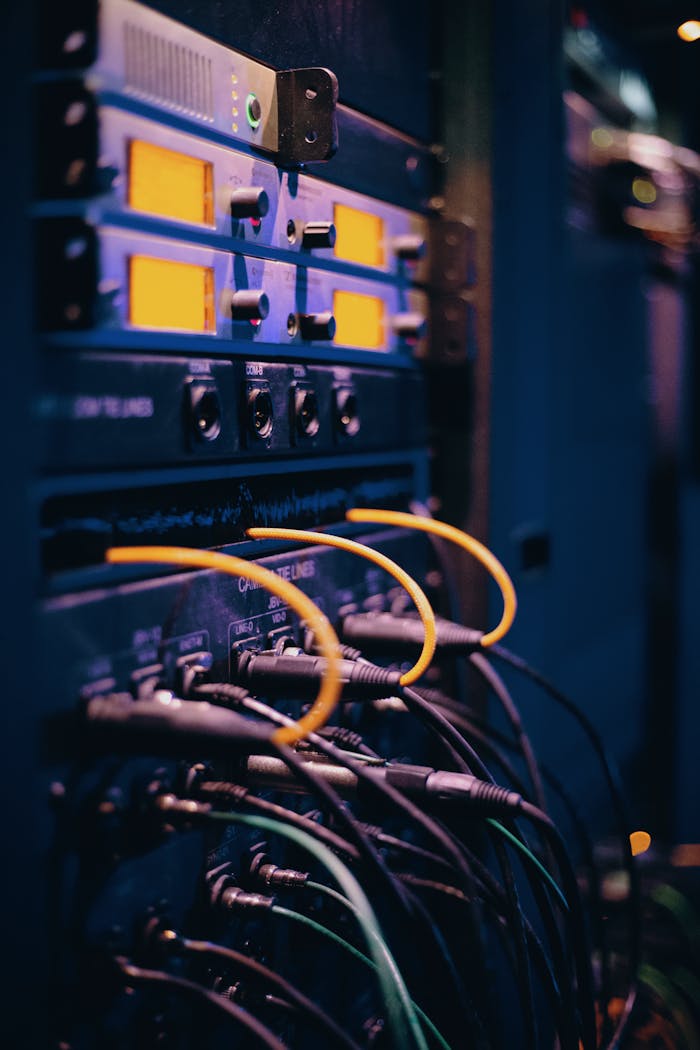A sudden burst of electromagnetic interference can cause critical errors in essential electronics, especially when EMI/RFI shielding is insufficient. As electronic devices become smaller, faster, and more connected, they also become more vulnerable to interference. This makes EMI/RFI shielded enclosures necessary and can mean the difference between reliable performance and unexpected failure.
Understanding EMI and RFI
Electromagnetic interference (EMI) is the disturbance or degradation of an electronic device’s function due to unwanted electromagnetic energy from an external or internal source. EMI can originate from a broad range of sources, both natural and man-made. Natural sources include lightning strikes, solar storms, and electrostatic discharges. Man-made sources are far more common and include motors, power supplies, switching regulators, LED lighting, cell phones, and nearly any electronic circuit that switches currents rapidly.
EMI can disrupt the operation of nearby electronic systems in unpredictable ways. For example, a smartphone placed too close to audio equipment may cause an audible buzz or distortion. Even everyday devices—like hairdryers or microwaves—can interfere with wireless networks or cause brief disruptions in connected systems.
Radio frequency interference (RFI) is a subset of EMI that occurs within the radio frequency spectrum. RFI is particularly problematic for systems that depend on radio-based communication, such as GPS, Bluetooth, cellular networks, and Wi-Fi.
The effects of EMI and RFI can vary widely depending on the environment and the susceptibility of the affected device. Short-term effects may include data loss, reduced communication quality, sensor glitches, or system crashes. Long-term exposure can accelerate wear on components by forcing them to operate under stress or respond to constant error correction. Over time, this can lead to degraded performance, higher failure rates, or even complete system failure.
What Is EMI Shielding?
EMI/RFI shielding involves containing or blocking electromagnetic energy to prevent it from interfering with the operation of electronic circuits. This is achieved by surrounding components or systems with materials that reflect, absorb, or redirect electromagnetic waves. The purpose is twofold: to protect the device from external interference and to prevent it from emitting noise that could affect nearby electronics.
EMI/RFI shielded enclosures are generally comprised of common shielding materials—such as aluminum, copper, steel, and nickel-coated composites—due to their high electrical conductivity, which enables them to block or redirect electromagnetic waves. Aluminum is especially effective at reflecting high-frequency electromagnetic waves and is widely used in shielded enclosures ranging from consumer electronics to industrial systems. Conductive coatings or films can be applied where traditional metal enclosures aren’t practical.
Shielding effectiveness relies on three key mechanisms:
- Reflection is typically the first line of defense, especially at high frequencies. Aluminum, with its high electrical conductivity, is particularly well suited to reflect radio frequency (RF) energy away from sensitive components.
- Absorption occurs when electromagnetic energy passes through the outer surface of a shielding material and is gradually converted into heat as it travels through the material. This mechanism is especially important at lower frequencies or when using thicker or multi-layered shielding designs, where the energy has more opportunity to be dissipated internally.
- Grounding ensures that any electromagnetic energy captured by the shield is safely directed away from sensitive components. Without proper grounding, even a well-designed enclosure can unintentionally re-radiate interference, reducing shielding effectiveness.
EMI/RFI Shielded Enclosures: Performance and Design
A fully shielded enclosure is the foundation of any effective EMI/RFI protection strategy. It provides complete coverage, safeguarding sensitive internal components from incoming noise while containing any emissions generated within. Lansing enclosures, constructed from corrosion-resistant aluminum, deliver strong baseline shielding, ensuring both inbound and outbound interference is minimized.
Why EMI/RFI Shielded Enclosures are Critical
- Complete coverage: Any electromagnetic leakage can compromise performance by letting noise enter or escape. Lansing’s precision-engineered enclosures achieve consistent, sealed protection.
- Regulatory confidence: Effective shielding simplifies EMI compliance with FCC (U.S. Federal Communications Commission), CISPR (International Special Committee on Radio Interference), and IEC (International Electrotechnical Commission) standards by reducing radiated emissions.
Design Considerations
Two major design challenges—seam integrity and ventilation—can undermine shielding if not addressed:
- Seam integrity: Gaps at panel interfaces are prime leakage points. Lansing combats this with tight-fit seams and conductive gaskets, preserving electrical continuity across all enclosure joints.
- Ventilation: Proper airflow is essential to prevent overheating, yet openings can degrade EMI/RFI shielding. Lansing’s P‑Style GrayBox enclosures offer optional vented side panels, which enable effective thermal management without sacrificing EMI protection.
Effective EMI/RFI shielding starts with the enclosure. The right materials and seamless construction make all the difference. Whether you’re designing mission-critical medical equipment, high-speed computing systems, or next-generation IoT devices, a properly shielded enclosure is essential.
Lansing enclosures are engineered with performance in mind—from aluminum construction that delivers natural EMI protection to customizable features like gasketing and precision-vented panels. Whether you need off-the-shelf reliability, like their MicroPak and GrayBox families, or tailored shielding solutions, Lansing can help you meet performance targets and EMI compliance standards.
Contact Lansing today to discover the shielding options that fit your application.



